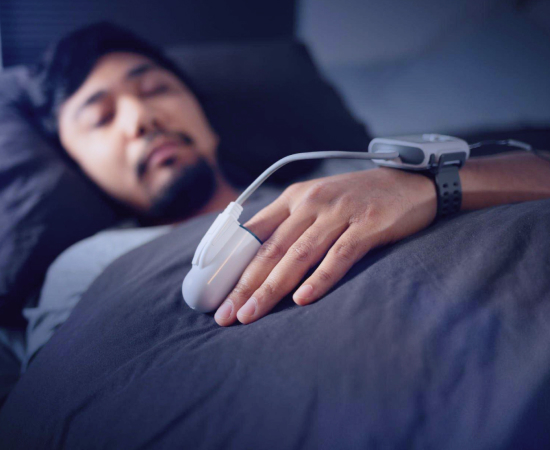

While snoring is often the sound most associated with sleep problems, it’s far from the only one. Many people around the world suffer from a range of sleep disorders that go undiagnosed, significantly impacting their health and quality of life. A sleep study, or polysomnography, is a useful diagnostic tool that can uncover these hidden issues.
This article will delve into the world of sleep studies, explaining what they are, why they’re important, and what they can reveal about your overall health.
A sleep study test procedure is a comprehensive method that records various physiological activities while you sleep. Typically conducted in a sleep clinic or at home, it involves attaching sensors of a sleep study machine (polysomnography or PSG machine) to your body to monitor:
In addition, a Positive Airway Pressure (CPAP/BPAP) machine may also be used to deliver pressurised air to keep the airways open during sleep. Video and audio recordings may also be used to document your sleep behaviours, such as movements, body position, and any sounds you make.
If your doctor recommends a sleep study, you may be wondering what to expect. Here’s a general overview:
Let us understand the possible disorders and diagnoses based on sleep study test results –
Untreated sleep disorders can have far-reaching consequences for both physical and mental health such as:
The treatment for a sleep disorder will depend on the specific condition diagnosed. Some common treatment options include:

A sleep study is a valuable tool that can provide crucial insights into your sleep patterns and diagnose underlying sleep disorders. Beyond snoring, these disorders can have significant consequences for your physical and mental health, increasing your risk of various chronic conditions and affecting your overall quality of life.
If you suspect you may have a sleep disorder, it’s essential to talk to your doctor and consider undergoing a sleep study. Early diagnosis and treatment can improve your sleep, your health, and your well-being.
Spread the love, follow us on our social media channels